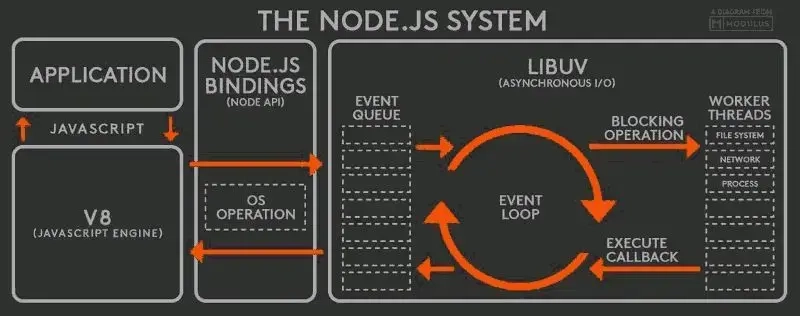Java Script Engine(How JS Works Behind The Scenes The Engine)
** **A JavaScript engine is the core software component that executes JavaScript code, typically as part of a web browser or runtime. Modern engines are highly optimized and use Just-In-Time (JIT) compilation to improve performance . For example, Google’s V8 engine (written in C++) drives Chrome and Node.js, while SpiderMonkey runs in Firefox, JavaScriptCore in Safari, Chakra in (legacy) Edge, and Hermes in React Native. Each engine implements the ECMAScript standard (the formal spec for JavaScript) and often also supports WebAssembly execution in the same sandbox . This means JavaScript engines are critical for making web pages responsive and fast, and even power serverside Node.js apps and desktop frameworks like Electron . How JavaScript Engines Work JavaScript engines transform source code into executable machine instructions through several stages. They begin by parsing the raw text into tokens and building an Abstract Syntax Tree (AST) – a structured, tree-like representation of the code . The AST makes it easier for the engine to analyze and optimize the program nterpretation & Bytecode: The engine often has a baseline interpreter (or a simple compiler) that executes the AST or generates intermediate bytecode. This lets the code run immediately without waiting for full optimization. Just-In-Time (JIT) Compilation: As the program runs, the engine detects "hot" functions or loops that are executed frequently. Those hot code paths are compiled on-the-fly into optimized machine code using a JIT compiler . For example, V8 frst interprets bytecode with its Ignition engine and compiles hot code with TurboFan . Optimizations: Engines use techniques like hidden classes and inline caching to speed up repeated property access and function calls . These optimizations adapt to the program’s behavior and can be deoptimized if assumptions change. Garbage Collection: JavaScript engines manage memory automatically. They periodically run a garbage collector to reclaim memory from objects that are no longer reachable . Modern engines use generational and incremental GC algorithms (e.g. V8’s Orinoco GC) to minimize pause times and improve efciency . By combining fast startup (via interpretation and bytecode) with heavy optimization of hot code, engines achieve both quick initial responsiveness and high overall performance . V8 (Chrome, Node.js) V8 is Google’s open-source high-performance JavaScript and WebAssembly engine, written in C++ . It powers Chrome on desktop and Android, and also underpins Node.js on the server. V8 implements the ECMAScript standard and runs on major platforms (Windows, macOS, Linux, ARM, etc.) . According to the Node.js documentation, “V8 is the JavaScript engine that powers Google Chrome…It parses and executes JavaScript code” . Crucially, V8 is designed as an independent library, which allowed the rise of Node.js: “The JavaScript engine is independent of the browser…V8 was chosen to be the engine that powered Node.js” . V8’s internal architecture is a multi-tiered compiler pipeline. It frst parses and converts scripts into an AST and then into bytecode for its interpreter (Ignition). When a function or loop becomes hot, V8’s optimizing compiler (TurboFan) translates it into highly efcient machine code. As developer Amirhossein Dehghanazar notes, “V8 uses two JIT compilers: Ignition (interpreter) for quick execution, and TurboFan (compiler) to optimize frequently run code” . V8 also employs advanced optimizations like hidden classes (called “maps” in V8) and inline caches to speed up property accesses and method calls . Over time, Google has continuously enhanced V8’s GC (for example, the new “Orinoco” collector) and added features like pointer compression to reduce memory use. Because of these optimizations, V8 is known for its speed. It aggressively compiles code to machine language, often leading benchmarks among browsers and Node.js engines. V8’s development is very active: the team recently introduced explicit compile hints, a feature that lets developers mark functions for eager compilation at load time, reducing startup latency . In summary, V8’s architecture and continual innovations make it a very fast and widely used engine across web and server environments. SpiderMonkey (Firefox) SpiderMonkey is Mozilla’s open-source JavaScript and WebAssembly engine, and it has the distinction of being the frst JavaScript engine ever created. It was written by Brendan Eich for Netscape Navigator in 1995 and later became a core part of Firefox. Today, SpiderMonkey powers Firefox and other Geckobased applications . Its design also allows embedding: for example, MongoDB and Adobe Acrobat have used SpiderMonkey for scripting support . SpiderMonkey’s current architecture involves multiple JIT tiers. It starts with a baseline JIT compiler (and a simple interpreter) to get code running quickly. For long-running code paths, it uses higher-tier compilers: historically this included TraceMonkey (the frst JS

**
 **A JavaScript engine is the core software component that executes JavaScript code, typically as part of
**A JavaScript engine is the core software component that executes JavaScript code, typically as part of
a web browser or runtime. Modern engines are highly optimized and use Just-In-Time (JIT)
compilation to improve performance . For example, Google’s V8 engine (written in C++) drives
Chrome and Node.js, while SpiderMonkey runs in Firefox, JavaScriptCore in Safari, Chakra in (legacy)
Edge, and Hermes in React Native. Each engine implements the ECMAScript standard (the formal spec
for JavaScript) and often also supports WebAssembly execution in the same sandbox . This
means JavaScript engines are critical for making web pages responsive and fast, and even power serverside Node.js apps and desktop frameworks like Electron .
How JavaScript Engines Work
JavaScript engines transform source code into executable machine instructions through several stages.
They begin by parsing the raw text into tokens and building an Abstract Syntax Tree (AST) – a
structured, tree-like representation of the code . The AST makes it easier for the engine to
analyze and optimize the program
nterpretation & Bytecode: The engine often has a baseline interpreter (or a simple compiler)
that executes the AST or generates intermediate bytecode. This lets the code run immediately
without waiting for full optimization.
Just-In-Time (JIT) Compilation: As the program runs, the engine detects "hot" functions or
loops that are executed frequently. Those hot code paths are compiled on-the-fly into optimized
machine code using a JIT compiler . For example, V8 frst interprets bytecode with its
Ignition engine and compiles hot code with TurboFan .
Optimizations: Engines use techniques like hidden classes and inline caching to speed up
repeated property access and function calls . These optimizations adapt to the program’s
behavior and can be deoptimized if assumptions change.
Garbage Collection: JavaScript engines manage memory automatically. They periodically run a
garbage collector to reclaim memory from objects that are no longer reachable . Modern
engines use generational and incremental GC algorithms (e.g. V8’s Orinoco GC) to minimize pause
times and improve efciency .
By combining fast startup (via interpretation and bytecode) with heavy optimization of hot code,
engines achieve both quick initial responsiveness and high overall performance .
V8 (Chrome, Node.js)
V8 is Google’s open-source high-performance JavaScript and WebAssembly engine, written in C++ . It
powers Chrome on desktop and Android, and also underpins Node.js on the server. V8 implements the
ECMAScript standard and runs on major platforms (Windows, macOS, Linux, ARM, etc.) . According
to the Node.js documentation, “V8 is the JavaScript engine that powers Google Chrome…It parses and
executes JavaScript code” . Crucially, V8 is designed as an independent library, which allowed the rise
of Node.js: “The JavaScript engine is independent of the browser…V8 was chosen to be the engine that
powered Node.js” .
V8’s internal architecture is a multi-tiered compiler pipeline. It frst parses and converts scripts into an
AST and then into bytecode for its interpreter (Ignition). When a function or loop becomes hot, V8’s
optimizing compiler (TurboFan) translates it into highly efcient machine code. As developer
Amirhossein Dehghanazar notes, “V8 uses two JIT compilers: Ignition (interpreter) for quick execution, and
TurboFan (compiler) to optimize frequently run code” . V8 also employs advanced optimizations like
hidden classes (called “maps” in V8) and inline caches to speed up property accesses and method calls
. Over time, Google has continuously enhanced V8’s GC (for example, the new “Orinoco” collector)
and added features like pointer compression to reduce memory use.
Because of these optimizations, V8 is known for its speed. It aggressively compiles code to machine
language, often leading benchmarks among browsers and Node.js engines. V8’s development is very
active: the team recently introduced explicit compile hints, a feature that lets developers mark functions
for eager compilation at load time, reducing startup latency . In summary, V8’s architecture and
continual innovations make it a very fast and widely used engine across web and server environments.
SpiderMonkey (Firefox)
SpiderMonkey is Mozilla’s open-source JavaScript and WebAssembly engine, and it has the distinction of
being the frst JavaScript engine ever created. It was written by Brendan Eich for Netscape Navigator in
1995 and later became a core part of Firefox. Today, SpiderMonkey powers Firefox and other Geckobased applications . Its design also allows embedding: for example, MongoDB and Adobe Acrobat
have used SpiderMonkey for scripting support .
SpiderMonkey’s current architecture involves multiple JIT tiers. It starts with a baseline JIT compiler (and
a simple interpreter) to get code running quickly. For long-running code paths, it uses higher-tier
compilers: historically this included TraceMonkey (the frst JS JIT), JägerMonkey, and IonMonkey. The
latest major engine is Warp, an optimized compiler that replaces parts of IonMonkey. As one summary
explains, “SpiderMonkey has used multiple generations of JIT compilers, including TraceMonkey, JägerMonkey,
IonMonkey, and the current WarpMonkey” . In practice, SpiderMonkey also supports hidden classes
and inline caches to optimize objects, similar to other engines.
SpiderMonkey fully supports modern ECMAScript (up to the latest ES standard) and WebAssembly.
Mozilla continuously updates it with new language features (e.g. async/await, ES modules, private felds,
etc.) and performance improvements. Compared to V8, SpiderMonkey has historically been somewhat
slower in raw benchmarks like Octane or JetStream, but Mozilla’s focus on correctness and conformance
means it often implements new JavaScript features early. In short, SpiderMonkey is a mature, highly
conformant engine that emphasizes compatibility and steady optimization, as evidenced by its multiple
JIT tiers and continual evolution .
JavaScriptCore (Safari/WebKit)
JavaScriptCore (often called JSC or Nitro by Apple) is the JavaScript engine used in Safari and other
WebKit applications . Originating from the KDE project’s KJS engine, Apple completely rewrote it
(SquirrelFish, then SquirrelFish Extreme) to gain performance . JavaScriptCore is an optimizing
virtual machine with several execution tiers. Its core components include:
LLInt (Low-Level Interpreter): A fast, low-overhead interpreter that executes bytecode
immediately after parsing. LLInt is written in a portable assembly format (ofineasm) to support
multiple architectures .
Baseline JIT: A quick compiler that translates bytecode into machine code without heavy
optimization.
DFG JIT (Data-Flow Graph): A more sophisticated optimizing compiler that analyzes variable
types and data flows to generate faster code.
FTL JIT (Faster Than Light): The highest-performance optimizing compiler (using LLVM under
the hood) that generates the fastest machine code for hot code paths .
According to Apple’s docs, JSC “consists of the following building blocks: lexer, parser, start-up interpreter
(LLInt), baseline JIT, a low-latency optimizing JIT (DFG), and a high-throughput optimizing JIT (FTL)” . In
practice, JavaScriptCore balances quick startup (through LLInt and baseline JIT) with eventual high
performance (via DFG and FTL). It fully supports the latest ECMAScript and WebAssembly specifcations,
and Apple continually optimizes it for Safari’s needs. While historically V8 tended to outpace JSC in some
benchmarks, Apple has narrowed the gap over time (e.g. the Nitro/JSC improvements in 2008 made
Safari up to 70× faster in some tests ). Today, JavaScriptCore remains a very capable engine with a
modern multi-tier JIT design .
Chakra (Edge Legacy / Internet Explorer)
Chakra is Microsoft’s JavaScript engine used in Internet Explorer 9+ and the original (EdgeHTML-based)
Microsoft Edge browser . The legacy Edge switched to Chromium/V8 in 2020, but ChakraCore (its open-sourced core) is still maintained for some applications. Chakra was designed for parallelism:
notably, it JIT-compiles scripts on a separate CPU core, in parallel with the rest of the browser . This was
intended to improve responsiveness by doing compilation work off the main thread. Chakra supports
modern JavaScript (ES2015 and beyond) and WebAssembly, although it has not been as aggressively
developed since Edge moved to Chromium.
According to Microsoft documentation, Chakra generationally compiled code and optimized for
various architectures (in IE10 it introduced JIT for x64 and ARM, plus improved garbage collection) .
In benchmarks from around 2010–2012, newer Chakra versions closed performance gaps with Chrome
and Firefox. However, since Chakra is no longer the engine in modern Edge, it’s less relevant today. In
summary, Chakra was a high-performance engine for its time—featuring a parallel JIT—and it maintained competitive speed and feature support, but it has been largely superseded by V8 in
Microsoft’s browsers .
Hermes (React Native)
Hermes is an open-source JavaScript engine developed by Meta (Facebook) specifcally for React Native
mobile apps . Released in 2019, Hermes is optimized for low-memory, low-CPU mobile
environments. Unlike browser engines, Hermes was designed without a JIT compiler. Instead, it
performs ahead-of-time (AOT) bytecode compilation at build time. In practice, a React Native app’s
JavaScript bundle is compiled into Hermes bytecode before shipping . This means the app can start executing code immediately from this compact bytecode, signifcantly improving startup time and reducing memory footprint. Indeed, React Native’s documentation notes that “using Hermes will result in improved start-up time, decreased memory usage, and smaller app size compared to JavaScriptCore” . At runtime, Hermes uses a lightweight interpreter for this bytecode. It intentionally omits a JIT: as Facebook’s blog explains, mobile apps care more about time-to-interactive and memory than peak CPU throughput, so Hermes trades off raw computation speed for predictability. “Hermes today has no JIT compiler…we believe that it would be quite challenging to achieve benefcial speed improvements without regressing our primary metrics” . In fact, Hermes underperforms some CPU-bound benchmarks compared to JIT engines, but those benchmarks aren’t representative of typical mobile workloads . For memory management, Hermes uses a custom garbage collector tailored to constrained devices. It allocates address space on-demand, can move and compact objects to reduce fragmentation, and is generational to avoid full-heap scans . These strategies help minimize memory use and avoid out-ofmemory kills on low-end devices. In short, Hermes focuses on startup performance and memory efciency for mobile apps, at the expense of JIT-style peak performance
Each engine implements ECMAScript (ES) features up to the latest standard (modules, async/await, etc.), though support can vary slightly (e.g. Chakra’s development halted before some very new ES proposals). Notably, V8, SpiderMonkey, JavaScriptCore, and Chakra all support WebAssembly (WASM) execution;Hermes currently does not .Performance-wise, engines like V8 and JavaScriptCore generally lead in raw benchmarks, while SpiderMonkey and Chakra have been slightly behind in single-threaded throughput tests. However, actual user-visible performance also depends on factors like garbage collection pauses, memory usage, and startup time. For example, Hermes may run slower on tight loops than V8, but it starts much faster and uses less memory, which is more critical on phones . In practice, competition among browsers keeps all major engines evolving; as Node’s documentation puts it, “there is a race for performance” in JavaScript engines, benefting developers with faster execution each year .Evolution and Future of JavaScript Engines
JavaScript engine development has been driven by this performance race and by evolving web standards. Initially, engines were simple interpreters (Netscape’s frst SpiderMonkey in 1995). Google’s 2008 release of V8, with its high-performance JIT, forced all other engines to adopt JIT compilation for
competitiveness . Since then, engines have added multiple optimization tiers, parallelization, and
advanced garbage collectors. The 2010s saw every major engine supporting WebAssembly alongside
JavaScript , enabling near-native execution of non-JS code on the web.
Looking forward, engines continue to optimize startup time, memory, and compliance with new
ECMAScript proposals. For example, V8’s recent explicit compile hints (Chrome 136+) let developers mark
critical functions for eager compilation, reducing page load delays . Engines will need to support
new JS features (like pattern matching, import attributes, etc.) and further improve WebAssembly
integration (e.g. shared memory, threads). Security and safety are also a focus: modern engines are
adding mitigations against speculative execution attacks and improving pointer safety. There is ongoing
research into using machine learning or profle-guided techniques to make JIT compilers even smarter.
In short, JavaScript engines will keep evolving in lockstep with JavaScript itself. The competitive
ecosystem – with different vendors constantly borrowing ideas – means we can expect continued
improvements in speed and efciency. As of 2025, every major engine is a sophisticated virtual
machine, and future advances (in multi-threading, AOT compilation, WebAssembly support, etc.) will
only make web and JavaScript applications more powerful and responsive.
Sources: Authoritative documentation and blog posts on V8, SpiderMonkey, JavaScriptCore, Chakra, and
Hermes . Each engine’s technical details are drawn from ofcial sources and
up-to-date reports













































































































































































![[The AI Show Episode 156]: AI Answers - Data Privacy, AI Roadmaps, Regulated Industries, Selling AI to the C-Suite & Change Management](https://www.marketingaiinstitute.com/hubfs/ep%20156%20cover.png)
![[The AI Show Episode 155]: The New Jobs AI Will Create, Amazon CEO: AI Will Cut Jobs, Your Brain on ChatGPT, Possible OpenAI-Microsoft Breakup & Veo 3 IP Issues](https://www.marketingaiinstitute.com/hubfs/ep%20155%20cover.png)




































































































































































































































































_incamerastock_Alamy.jpg?width=1280&auto=webp&quality=80&disable=upscale#)
_Brain_light_Alamy.jpg?width=1280&auto=webp&quality=80&disable=upscale#)





























































































![Senators reintroduce App Store bill to rein in ‘gatekeeper power in the app economy’ [U]](https://i0.wp.com/9to5mac.com/wp-content/uploads/sites/6/2025/06/app-store-senate.jpg?resize=1200%2C628&quality=82&strip=all&ssl=1)






















































































